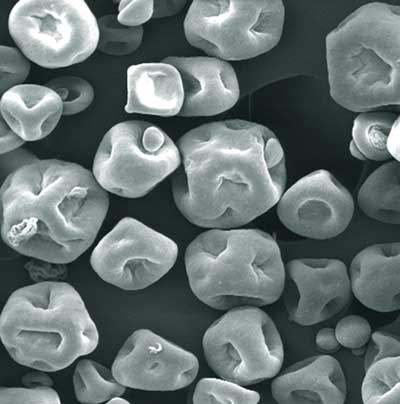Smallest nano particles analized in only a few minutes
The CPS disc centrifuge particle size analyzer combines the traditional and proven method of differential sedimentation with the advantages of modern technology.
The result is particle size measurement in unsurpassed quality, highest accuracy, resolution and repeatability.
The use of modern technology allows to measure even smallest nano particles in only a few minutes.
The size range from 5 nm to more than 50 µm can be analyzed with the highest possible quality available. The disc centrifuge offers a direct measurement and does not need mathematical algorithms to create a result.
Although the size of the disc centrifuge allows using it as a desk top laboratory system, the quality of the measurement is comparable to that of the long established large ultracentrifuge measurements which can be done in all kind of liquids, the maximum speed of rotation is 24.000 rpm.
The particles sediment in an optically clear, rotating disc. When particles approach the outside edge of the rotating disc, they block/scatter a portion of the light beam that passes through the disc. The change in light intensity is continuously recorded and converted by the operating software into a particle size distribution. In the absence of particles in the disc chamber, almost the entire beam reaches a photodiode detector, where electric current is generated in proportion to the beam intensity. When there are particles in the path of the beam, some of the light is scattered, and thus falls outside of the acceptance angle of the detector. The net intensity of the light that reaches the detector falls along with the current produced by the detector.
The volume of particles in the beam at any time during the sample analysis is calculated by using a combination of Stokes‘ law, to determine the size of the particles in the detector beam, and the Mie scattering theory, to determine the quantity of particles of the diameter that will produce the measured reduction in beam intensity.
The advantage of the higher sensitivity of the new 405 nm source over the common 470 nm LED gradually increases as the particle size falls. The maximum advantage is reached in the Rayleigh size region (below ~50 nm), where the ratio of scattering intensity approaches the fourth power of the ratio of wavelengths: (470/405)4 = 1.81, or 81% higher sensitivity.
All new CPS disc centrifuges now come with the new 405 nm light source.




